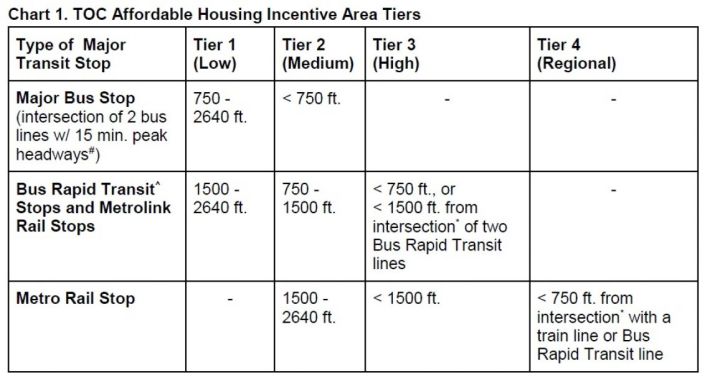Now that Measure S has clearly been soundly defeated, the city of Los Angeles is implementing that other planning reform measure that actually passed. Measure JJJ, or the "Build Better L.A." initiative, received 64.8 percent approval in the November 2016 election.
Under JJJ, for developments with ten or more residential units, if the city grants a variance (such as building taller than zoning rules allow by right), the developer is required to include affordable housing. The affordable housing could be on site, or within a few miles of the project, or could be in the form of an in-lieu payment to L.A.’s Affordable Housing Trust Fund. Variances also trigger requirements to hire locally and pay prevailing wages.
Along with the variance provision, which applies citywide, Measure JJJ creates a “Transit Oriented Communities Affordable Housing Overlay” within a half-mile radius of major transit stops. This TOC zone includes incentives for affordable housing, increased density, and decreased parking requirements.

Earlier this week, the city of L.A. Department of City Planning released proposed guidelines for its Transit Oriented Communities Affordable Housing Incentive Program. The department also released its FAQ sheet and a draft study on how much developers would pay in in-lieu fees for off-site affordable housing.
The guidelines feature four tiers of incentives based on how close the site is to high-quality transit.

Based on which tier the project qualifies for, the city allows for a greater number of units, increased floor area ratio, and reduced parking requirements (including un-bundling parking from housing). In addition, transit-oriented developments may be granted additional incentives regarding setbacks/yards, open space, lot coverage, lot width, and building height.
For additional details, see the 11-page proposed guidelines document, the FAQ, or coverage at Urbanize.
DCP is seeking public comments through April 13. The proposal is scheduled to go before the City Planning Commission on May 11, and the commission's recommendation then goes back to the Director of Planning for a final decision.







